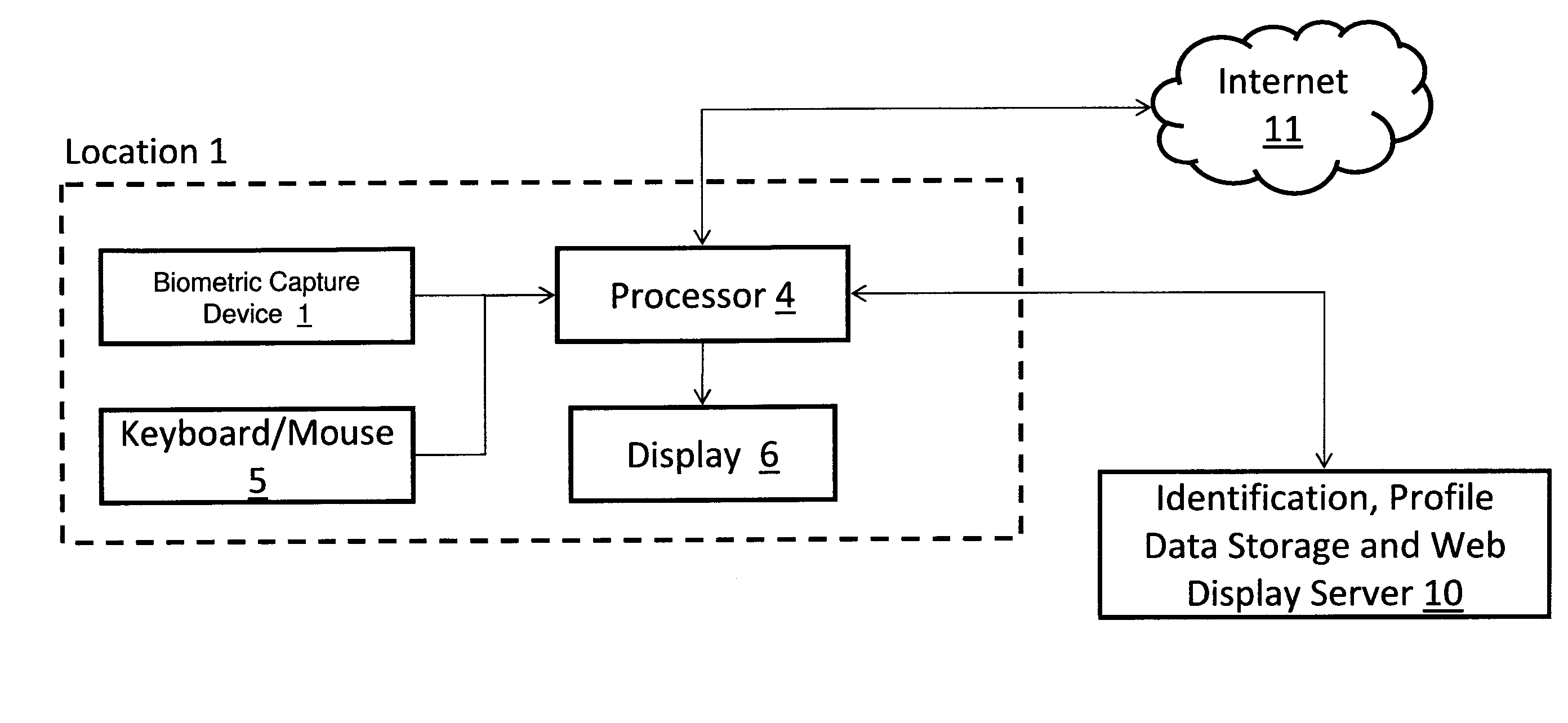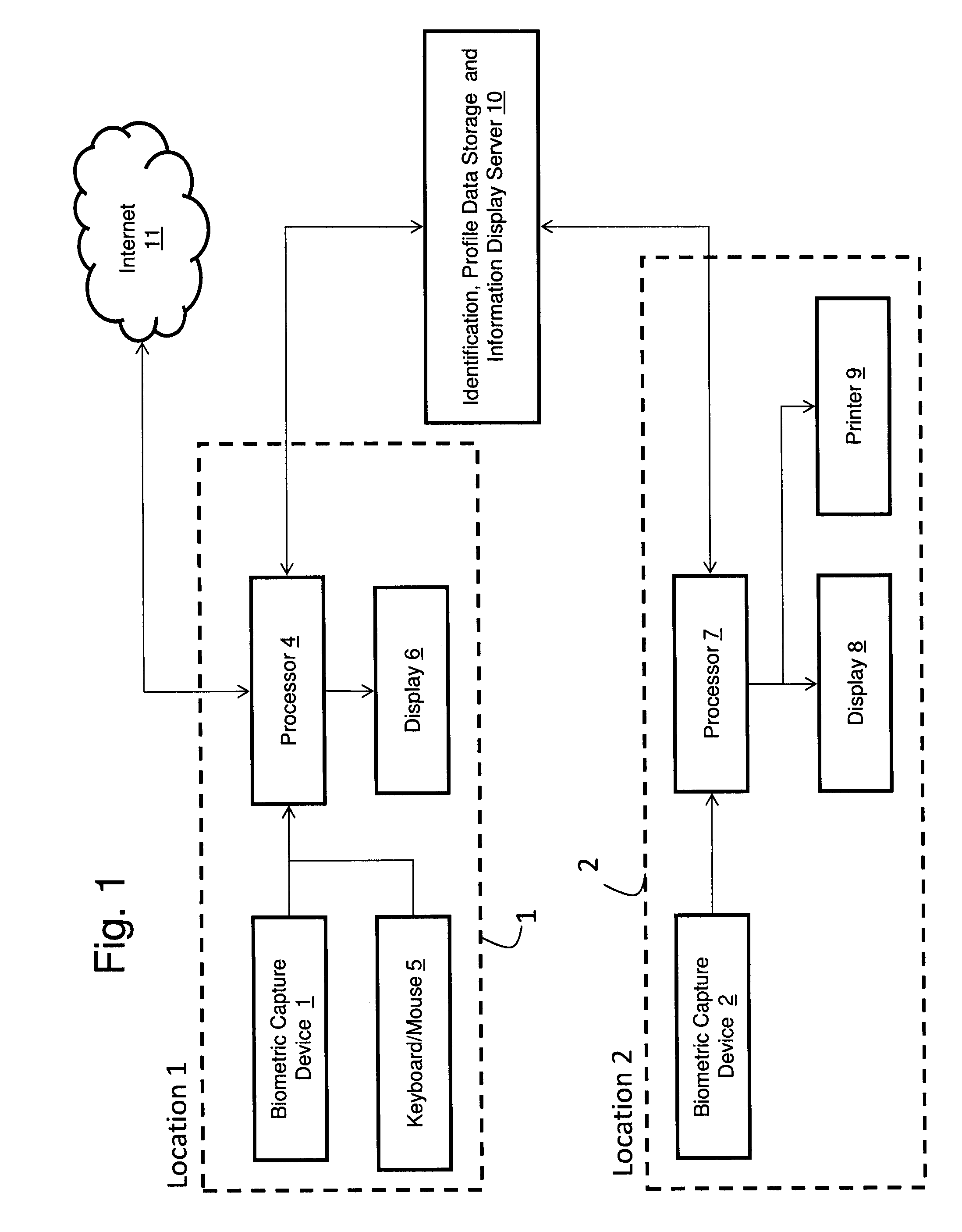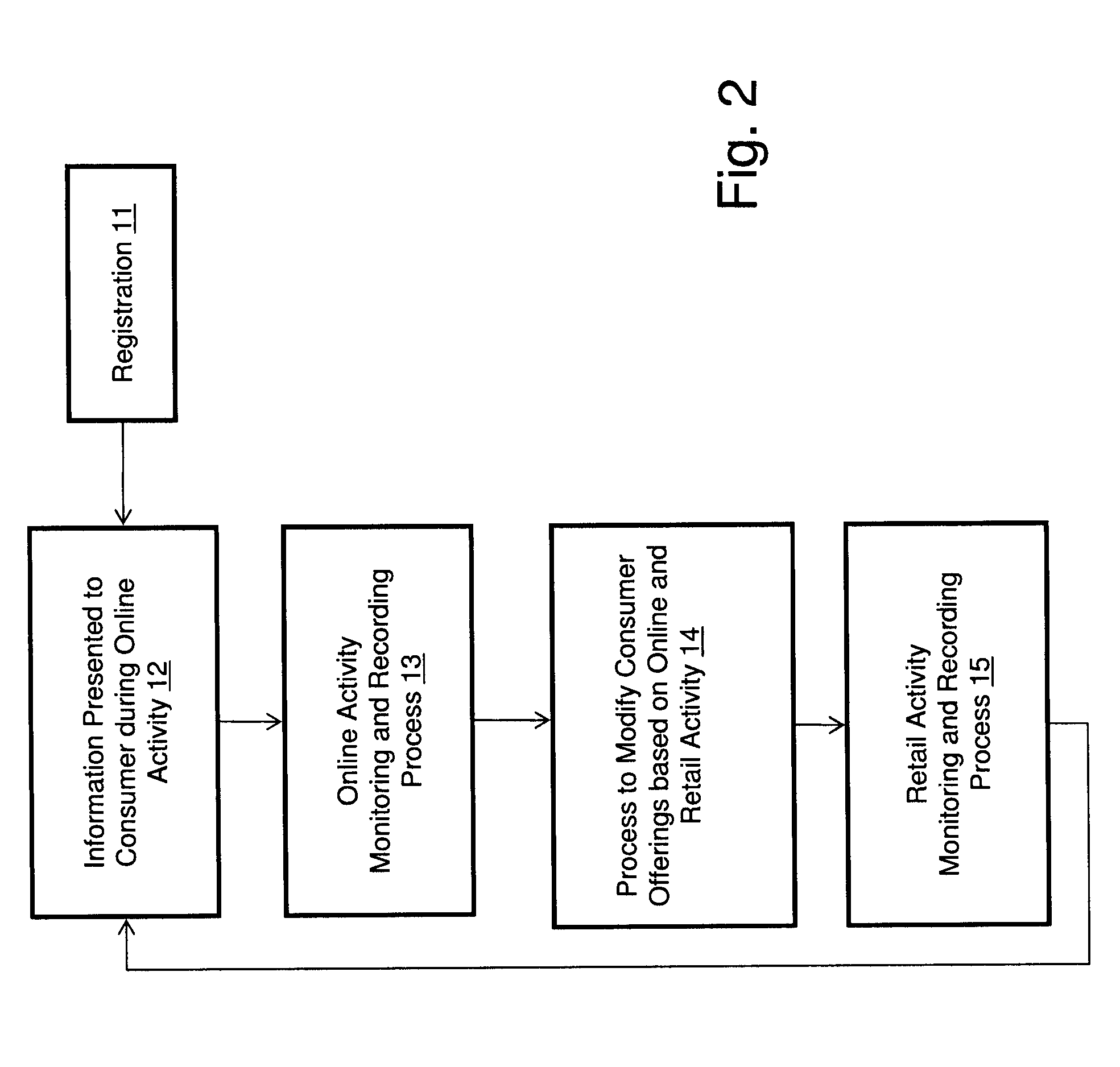Measuring Effectiveness of Advertisements and Linking Certain Consumer Activities Including Purchases to Other Activities of the Consumer
a technology of advertising effectiveness and measuring effectiveness, which is applied in the direction of instruments, data processing applications, marketing, etc., can solve the problems of billboards leading to increased sales of products, difficult to determine whether, and disparate activities of consumers, so as to improve the effectiveness of advertising and marketing, improve the effect of advertising effectiveness and improving the efficiency of consumer activities
- Summary
- Abstract
- Description
- Claims
- Application Information
AI Technical Summary
Benefits of technology
Problems solved by technology
Method used
Image
Examples
first embodiment
[0021]Referring first to FIG. 1, the invention is illustrated wherein a consumer is at a first location and views an advertisement on a display device 8 such as a computer screen or billboard. The location may be online, or may be in a bus shelter. The consumer then presents their biometric information, such as the iris, to a device adjacent to the display device 6 such as a web camera capable of recording iris imagery. A processor 4 collects the biometric information and transmits it to a remote server that stores the biometric data and indexes it to the particular advertisement that was on display 6 at the time the biometric data was collected. This biometric data collection process can occur repeatedly any time the consumer has interest in a particular product or service that is displayed. At a second location, the consumer presents their biometric once again to a second biometric collection device. The second location may be a retail store in which the product advertised at the ...
second embodiment
[0024]the invention is illustrated in FIG. 3 wherein the name, card number or other number unique to the consumer is collected and sent to the local processor 4. When a particular advertisement is displayed, the consumer registers their potential interest in the advertisement. This can be performed by a simple mouse click. The identifying information is then transmitted to the remote server where it is stored and indexed to the particular advertisement that was on display at the time. At a retail store, the consumer swipes their card or enters in their identifying number. The remote identification and profile data storage server uses this unique information to index into the advertisements that were shown in the first location. The link between the advertisement at location 1 and the consumer's activity at location 2 is then stored in the database. This diagram shows an implementation of FIG. 1 just using credit card number information.
[0025]There are several incentives for the cons...
PUM
 Login to View More
Login to View More Abstract
Description
Claims
Application Information
 Login to View More
Login to View More - R&D
- Intellectual Property
- Life Sciences
- Materials
- Tech Scout
- Unparalleled Data Quality
- Higher Quality Content
- 60% Fewer Hallucinations
Browse by: Latest US Patents, China's latest patents, Technical Efficacy Thesaurus, Application Domain, Technology Topic, Popular Technical Reports.
© 2025 PatSnap. All rights reserved.Legal|Privacy policy|Modern Slavery Act Transparency Statement|Sitemap|About US| Contact US: help@patsnap.com



